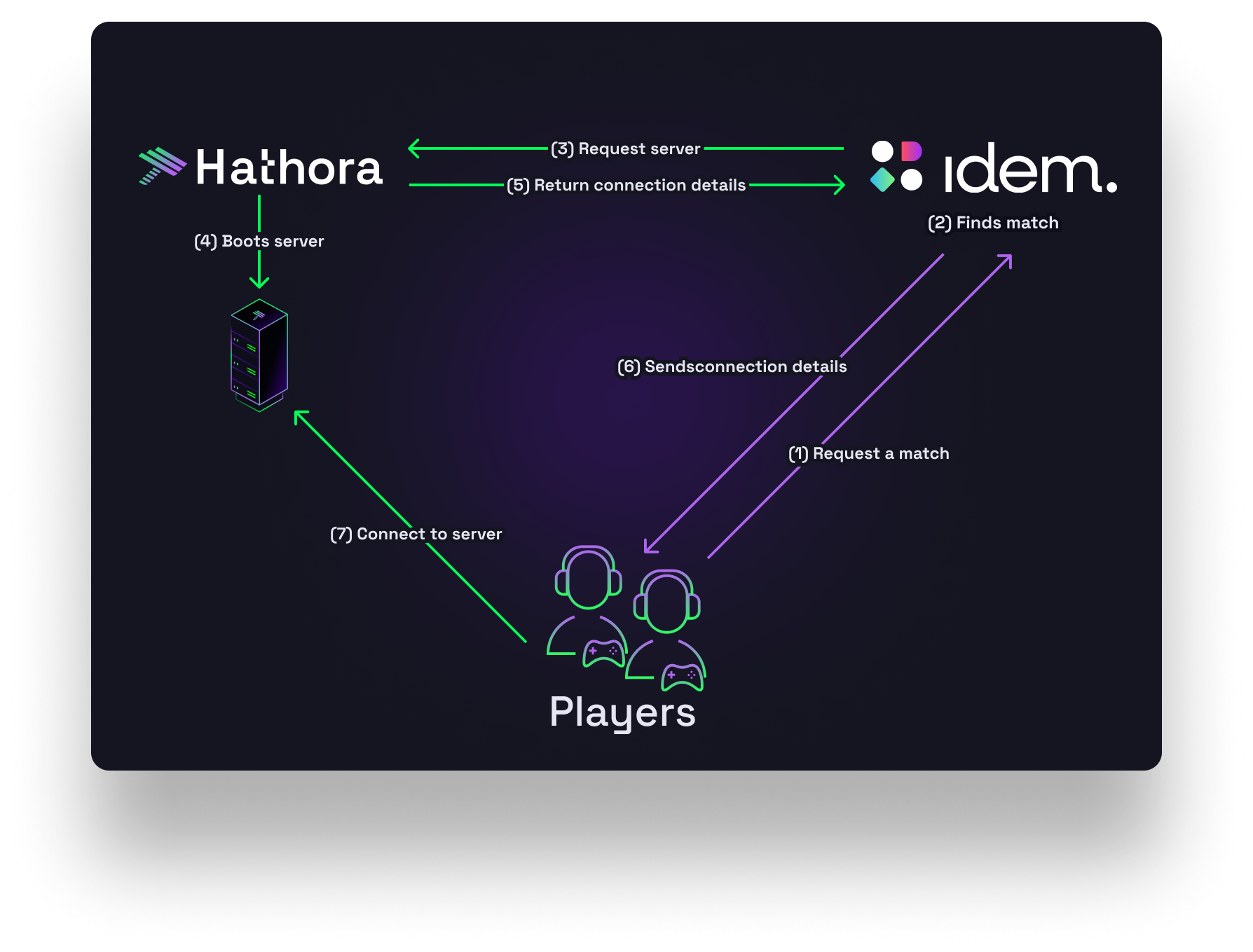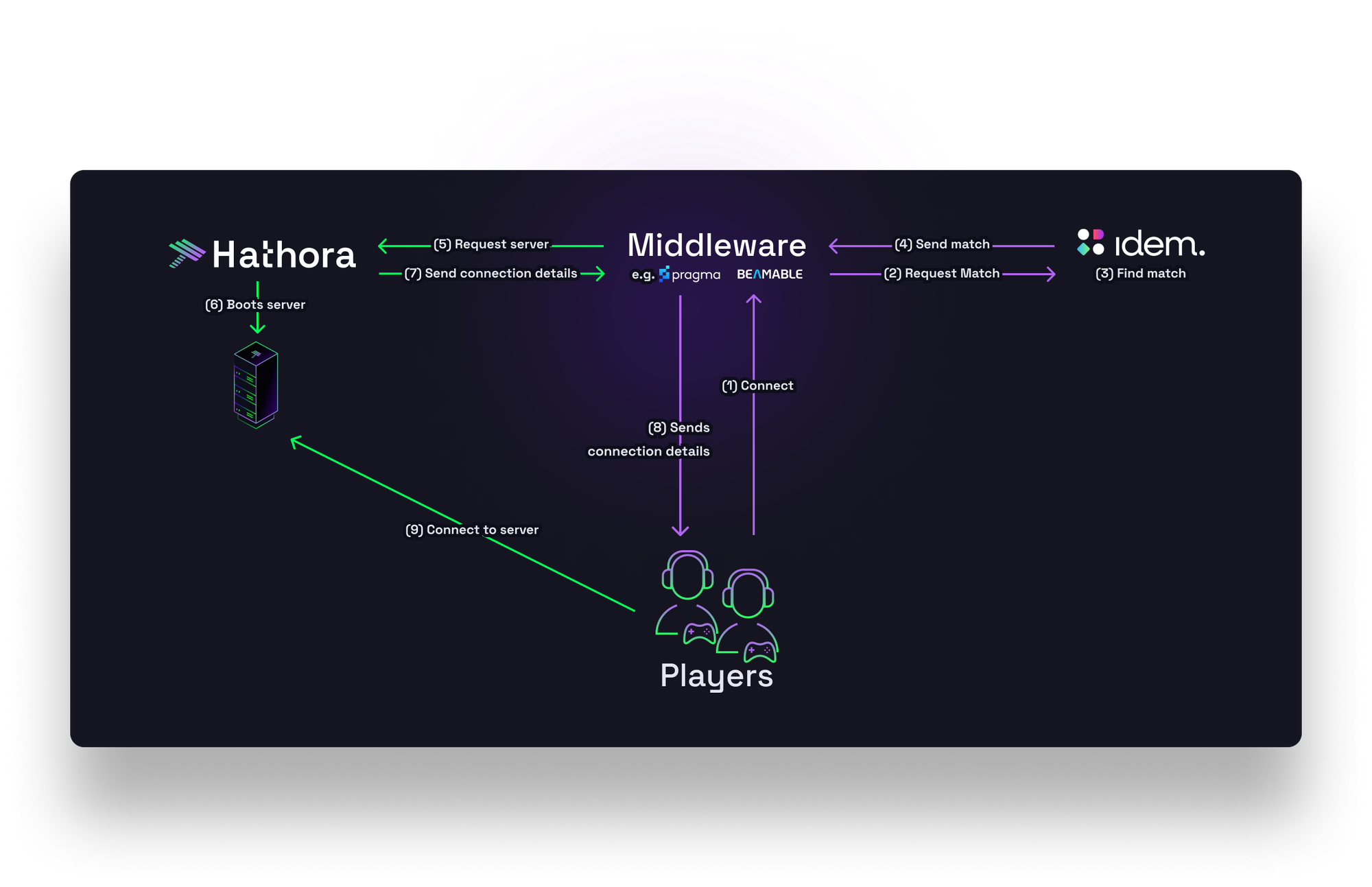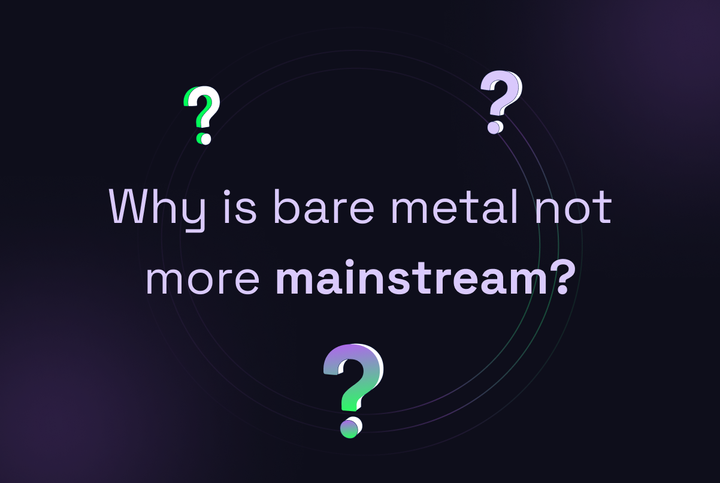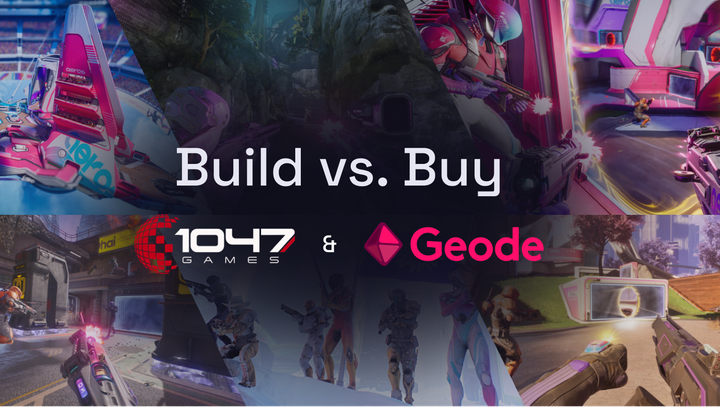Simple Matchmaking: Idem on Hathora

We’re trying something a little different with our blog in this post. Given the rapid proliferation of backend tools and middleware in the gaming industry, we want to spotlight tools and teams working in the multiplayer games space. If you like this one, please let us know so we’ll continue highlighting more of them in the future. Some of these features will have direct Hathora integrations, others will be more general, focusing on various infra and backend topics related to gaming. However, the goal of each post will be to serve as a resource for developers and studio leaders that spend some time thinking about backends and the best ways to build enduring multiplayer games as easily as possible!
You’re building a multiplayer game and you think P2P networking is too 2000s. This means you’re in the market for dedicated servers, and you have a lot of considerations to take into account. Let’s zoom in on one:
What’s your plan to handle matchmaking?
This essential question and functionality can take months or even years to build yourself.
To answer this question, we wanted to share Idem. We’ve recently seen them emerge on the scene to solve this challenge. Idem aims to bring their expertise from working on matchmaking for games like Stormgate (the #1 strategy game during Steam’s Next Fest this year) to your upcoming title. Better yet, they have a first party integration with Hathora.
To learn more about Idem and how combining it with Hathora can help you build your game, read on!
Idem: Who, What, and Why
Who:
Idem was co-founded by Andrea Locatelli (aka 'Toxi'), Moritz Schattka, and Mäx Blauth. Andrea built the matchmaking for W3Champions, the community ladder credited with reviving Warcraft III competition around the world. As we alluded to before, that work brought Andrea to to build matchmaking for Frost Giant Studio’s first title, Stormgate. Stormgate, which aims to be the spiritual successor to Warcraft III and Starcraft II, recently ran the #2 played Steam Next Fest demo overall and the Stormgate team prides itself on the versatility of their matchmaking. The first game to effectively use Idem’s technology in their live demo.
What:
Idem enables developers to leverage their matchmaking algorithm with a single-API call. Its matchmaker solves and optimizes for a number of complex challenges at once. These include, but are not limited to:
(1) reducing player waiting-time to play a match
(2) finding opponents with a similar skill level
(3) trading off between waiting-time and skill-level of opponents dynamically, depending on fluctuation of concurrent users queueing up
(4) factoring for which region is best for the players to use in their game
You might have more ideas to add to this list of rules and requirements. The great part about Idem is that it allows you to simply implement these matchmaking wishes into your game.
Why:
The Idem team connected with us asking if we’d be game for them to build a first-party integration for Hathora. They don’t plan on providing studios with server orchestration, so they wanted to explore how teams using Idem can easily integrate with Hathora. We were excited by this proposition for one main reason:
Matchmaking is a key feature for competitive games, and an easy way to implement it will help game developers at all levels.
With some more context on the Idem x Hathora connection, we’ll lay out how Idem and Hathora play together.
Where do Hathora’s dedicated servers fit into this?
Simply put, Hathora gives developers access to globally distributed and scalable dedicated servers with a single API call. Because we focus on dedicated servers, we encourage customers to buy or bring their own middleware that provides the auth, matchmaking, payments, et al to fully service a live game. From our vantage point, the teams building middleware at Pragma, Beamable, and Xsolla’s XBE are doing an effective job handling these needs.
If a team is just trying Hathora, they would use our lobby service to match two or more players that are internal to their own team. This is not a production-grade solution. In tight squeezes, a team could use the lobby service for semi-production cases, like we covered with Wildcard Alliance’s Dreamhack demo. However, before teams go into production or even more serious internal and external testing we recommend teams adopt a more fully-functional backend stack.
With the launch of Idem and their simple integration with Hathora, you can get a functional matchmaker integrated into your game and launch processes on Hathora super efficiently. Now let me illustrate how they come together.
How: Idem x Hathora Architecture
There are two implementations you can do with Idem x Hathora. The first is with Idem and Hathora and no middleware, and the second is Idem, Hathora, and a Middleware.
Here is the Idem x Hathora path:

Idem’s matchmaking is extremely customizable. Users can specify different criteria for what determines a match. For example, you could instruct Idem to choose the most suitable region to start the game’s dedicated server for the match based on the region with closest ping between two or more players. You can add rules around player rankings. The system would even handle a MOBA or more creative 5v5v5 game. You make the rules; Idem implements them.
For teams building their own or using fully-featured tools like Pragma, Beamable, Lootlocker, Xsolla Backend, and other platforms, the integration would look slightly different:

These two architectures of Idem x Hathora and Idem x Middleware x Hathora provide context for the quick-start implementation and the larger integration. We don’t just want to leave you with graphics, we think this is implementable today. Thanks to Idem we’ve got that all ready for you.
Try it out yourself!
Idem built a live, sample integration based off of Hathora’s sample game Bullet Mania. You can play Bullet Mania powered by Idem’s matchmaking here. Even better, the project is completely open source, so you can try deploying it and customizing it yourself!
Is Idem the right fit for your game?
Today, we think Idem is a great fit for competitive multiplayer games that are still in development. Being able to quickly onboard matchmaking for your game's first playtests can help improve the experience for your players while also allowing early iterations on matchmaking.
It is worth noting that Idem is very much a new tool that is very focused on matchmaking and player ratings. For it to work for most production games, you’ll need to make sure you integrate it with your backend services that manage the rest of your player data.
In the future, we can see Idem adding some more pieces to their stack that would even make their tool comprehensive enough to launch games with Idem as the sole backend tool in the middleware layer.
As we try to highlight new pieces of backend tech, we certainly have high hopes that the Idem team will keep iterating at the velocity we’ve seen so far.
If you have any other tools you’d like us to feature, feel free to share them with us at contact@hathora.dev.



